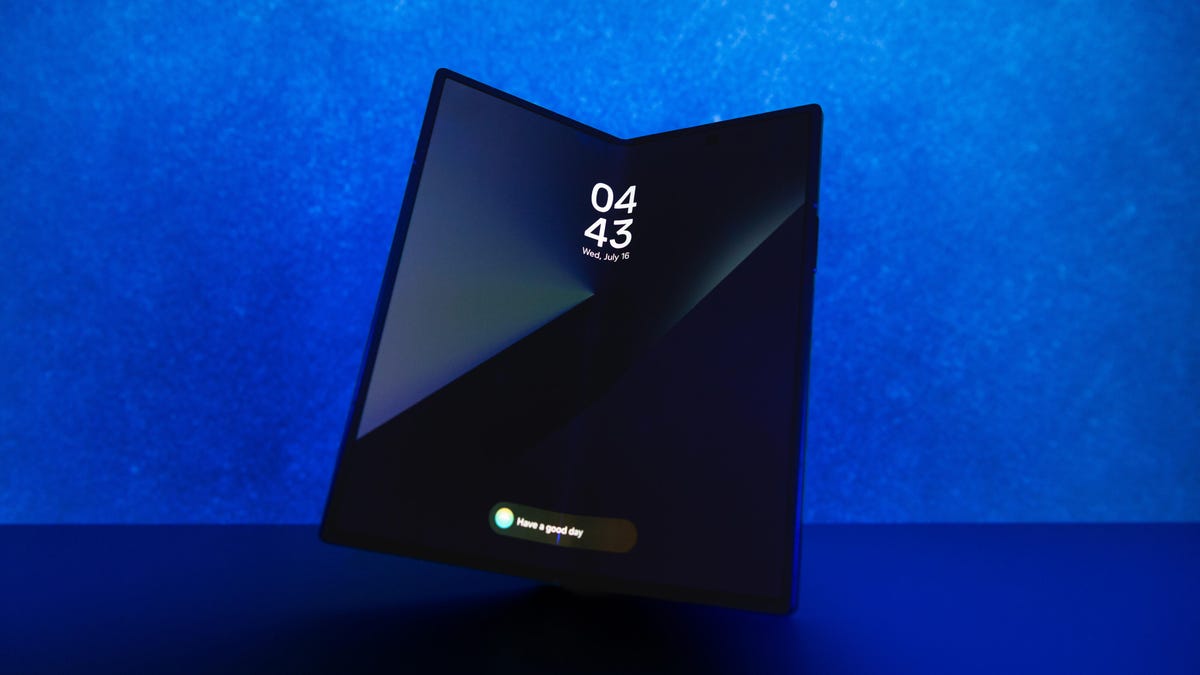Foldables have been a staple of the smartphone release cycle for years now, with offerings from companies like Samsung, Motorola and Google. But despite the refreshingly unique form factor in a sea of mobile uniformity, the vast majority of consumers still aren’t interested.
According to a CNET survey, 64% of respondents say they aren’t willing or interested in buying a foldable smartphone in the next year, while just 13% say they are. Another 20% aren’t sure if they want a foldable, and only 3% say they already own one.
Foldables began making a resurgence in smartphone form about six years ago, when Samsung released the first Galaxy Z Fold and Motorola brought back the iconic Razr. Other companies like Google, Honor, Oppo and Huawei have released their own foldable devices, from book-style iterations to clamshell ones.
There’s still one key player that hasn’t entered the game yet: Apple, which has been rumored to be developing a foldable iPhone for several years now. Reports say it’s working with Samsung Display to develop screens for that upcoming phone. It’s possible that once Apple enters the foldables space, interest will grow across the board.
“Apple’s potential entry in the market later in 2026 could indeed help [with] legitimizing and democratizing the category,” Thomas Husson, principal analyst at Forrester, told me earlier this month.
A niche market
Despite the amount of options, foldables remain a niche market. They make up under 5% of smartphone shipments, according to a report by TrendForce. But sales are expected to rise. An IDC report says foldable shipments will reach 45.7 million units worldwide by 2028, a significant increase over the 18.1 million units shipped in 2023. Still, adoption is relatively slow.
“It’s a pretty big commitment for the average user to switch something they depend on so much,” Ryan Reith, group vice president for IDC’s Worldwide Device Tracker, told me ahead of Samsung Unpacked in early July. “Nobody wants a trade-off, especially when you’re going to make that big transition.”
Phones like the Motorola Razr tap into nostalgia, and also offer variations at multiple prices.
That’s why companies are fighting tooth and nail to make their phones sleeker, cheaper and more powerful — to varying degrees. Samsung’s latest Galaxy Z Fold 7 puts the emphasis on a slimmer build and better camera, while slapping on a $2,000 price tag that will likely only make it appeal to die-hard tech enthusiasts or people without strict budget constraints.
Motorola, meanwhile, has focused on developing more budget-friendly versions of its Razr smartphones, so you don’t have to break the bank to tap into that foldable nostalgia in 2025 and beyond. (Samsung also has a “more affordable” version of its Galaxy Z Flip 7 that starts at $900).
Still, appealing to a wider consumer base can be challenging, especially when so many people have reservations.
The barriers to buying a foldable
Some of the biggest issues preventing people from buying a foldable smartphone are high prices (36%), durability concerns (31%), not understanding the advantages over a regular phone (31%) and a perceived lack of practicality (26%). Also, 15% of people say foldables are too bulky, 10% said their preferred brand doesn’t make a foldable yet and 8% are concerned about subpar camera quality.
Many of those perceptions could soon change, thanks to the release of phones like the Z Fold 7, which places an emphasis on thinness, durability and a higher-grade camera. But other factors like a high price can still be a hindrance. And if you’ve sworn allegiance to another brand like Apple, it’s possible nothing will convince you to switch to a foldable until that specific company makes one. That’s the power of brand allegiance.
The resistance to buying a foldable phone is fairly consistent across age groups. Millennials are the most keen to venture into foldable territory, with 19% of respondents saying they’d be interested in buying one in the next year (nostalgia no doubt plays a role here). They’re followed by 14% of Gen Zers who would be willing to make that purchase, 10% of Gen Xers and 8% of Boomers.
So far, that doesn’t appear to be stopping phone makers from putting their hat in the ring and seeing if they can convince shoppers to fold.
Methodology
CNET commissioned YouGov Plc. to conduct the survey. All figures, unless otherwise stated, are from YouGov Plc. Total sample size was 2,121 adults, of whom 2,064 do not own a foldable smartphone. Fieldwork was undertaken between July 1 and 3, 2025. The survey was carried out online. The figures have been weighted and are representative of all US adults (aged 18+).
Read the full article here


